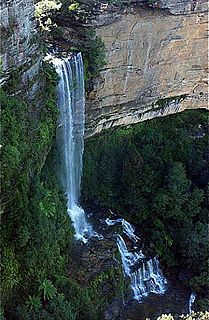| Farnell New South Wales | |||||||||||||||
|---|---|---|---|---|---|---|---|---|---|---|---|---|---|---|---|
 Location in New South Wales | |||||||||||||||
| |||||||||||||||
Farnell County is one of the 141 Cadastral divisions of New South Wales.
Farnell County was named in honour of the Premier of New South Wales James Squire Farnell (1825-1888). [1]
| Farnell New South Wales | |||||||||||||||
|---|---|---|---|---|---|---|---|---|---|---|---|---|---|---|---|
 Location in New South Wales | |||||||||||||||
| |||||||||||||||
Farnell County is one of the 141 Cadastral divisions of New South Wales.
Farnell County was named in honour of the Premier of New South Wales James Squire Farnell (1825-1888). [1]
A full list of parishes found within this county; their current LGA and mapping coordinates to the approximate centre of each location is as follows:

Local government in Australia is the third tier of government in Australia administered by the states and territories, which in turn are beneath the federal tier. Local government is not mentioned in the Constitution of Australia and two referenda in the 1970s and 1980s to alter the Constitution relating to local government were unsuccessful. Every state government recognises local government in their respective constitutions. Unlike Canada or the United States, there is only one level of local government in each state, with no distinction such as cities and counties.

The South Creek or Wianamatta, a creek that is part of the Hawkesbury-Nepean catchment, is located on the Cumberland Plain, also referred to as Greater Western Sydney, New South Wales, Australia.
The Geographical Names Board of New South Wales, a statutory authority of the Land and Property Information division, Department of Finance and Services in the Government of New South Wales, is the official body for naming and recording details of places and geographical names in the state of New South Wales, Australia.

The Yass River, a perennial river that is part of the Murrumbidgee catchment within the Murray–Darling basin, is located in the Southern Tablelands and South Western Slopes districts of New South Wales, Australia.

The Watagan Mountains or Watagans or Wattagan Mountains, a mountain range that is part of the Great Dividing Range, is located on the Upper Hunter region of New South Wales, Australia. The range is situated between the Upper Hunter River catchment and the Tuggerah Lakes. The Watagans are a popular tourist location and are close to Newcastle, Sydney and the Central Coast.
The Billabong Creek, a perennial river of the Murrumbidgee catchment within the Murray-Darling basin, is located in the South West Slopes region of New South Wales, Australia.

Yancowinna County is one of the 141 Cadastral divisions of New South Wales.

Sandon County is one of the 141 Cadastral divisions of New South Wales. It is centred on Armidale, and also includes Uralla.

Cowper County, New South Wales is one of the 141 Cadastral divisions of New South Wales.

Boorowa River, a perennial stream that is part of the Lachlan catchment within the Murray–Darling basin, is located in the central–western region of New South Wales, Australia.
The Coolumbooka River, a perennial river of the Snowy River catchment, is located in the Monaro region of New South Wales, Australia.

The Kedumba River, a perennial river that is part of the Hawkesbury-Nepean catchment, is located in the Blue Mountains and Macarthur regions of New South Wales, Australia.
The Farnell ministry was the eighteenth ministry of the Colony of New South Wales, and was led by the Honourable James Farnell. Farnell was elected to the New South Wales Legislative Assembly in 1860.
Bettowynd Creek, a partly perennial stream of the Moruya River catchment, is located in the Southern Tablelands and South Coast regions of New South Wales, Australia.
The Clouds Creek, a perennial stream that is part of the Clarence River catchment, is located in the Northern Tablelands region of New South Wales, Australia.
The 1877 New South Wales colonial election was held between 24 October and 12 November 1877. This election was for all of the 73 seats in the New South Wales Legislative Assembly and it was conducted in 53 single-member constituencies, six 2-member constituencies and two 4-member constituencies, all with a first past the post system. Suffrage was limited to adult male British subjects, resident in New South Wales. The previous parliament of New South Wales was dissolved on 12 October 1877 by the Governor, Sir Hercules Robinson, on the advice of the Premier, Sir John Robertson.

Blowering, New South wales is a rural locality in the Snowy Mountains of New South wales and a civil Parish of Buccleuch County.